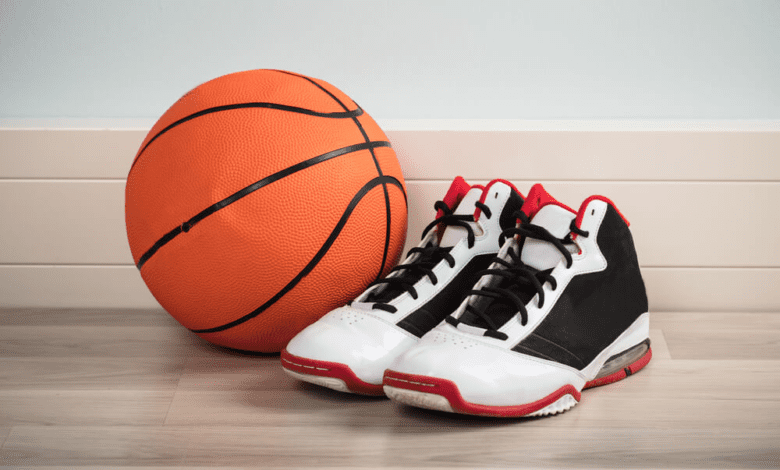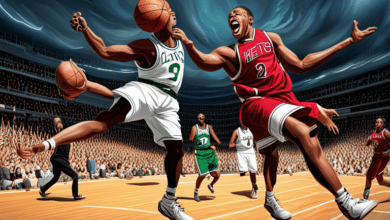How to Choose the Best Basketball Shoes for Performance and Comfort

How to Choose the Best Basketball Shoes, Choosing the right basketball shoes is crucial for maximizing your performance and preventing injuries on the court. With so many options available, it can be overwhelming to find the perfect pair that offers both performance-enhancing features and exceptional comfort. In this article, we will guide you through the key factors to consider when selecting basketball shoes, helping you make an informed decision that suits your playing style and preferences.
How to Choose the Best Basketball Shoes
When shopping for basketball shoes, keep the following factors in mind:
Fit and Size: Proper fit is essential for comfort and performance. Ensure the shoes are neither too tight nor too loose, allowing for a snug fit that supports your foot without constricting movement. Consider trying them on with basketball socks to ensure an accurate fit.
Ankle Support: Ankle support refers to the level of stability and protection provided to the ankle joint by a pair of basketball shoes. In basketball, players often make quick lateral movements, change directions rapidly, and jump, putting significant stress on the ankles. Ankle support in basketball shoes is designed to minimize the risk of ankle injuries, such as sprains or twists, by providing stability and limiting excessive movement.
Basketball shoes with ankle support typically feature a higher cut design, either mid-top or high-top, compared to low-top shoes. The higher cut extends above the ankle bone, offering additional support to the ankle joint. This design helps to limit excessive ankle inversion (rolling inward) or eversion (rolling outward) during sudden movements, reducing the chances of spraining the ankle.
Additionally, basketball shoes with ankle support often incorporate padding or cushioning around the ankle collar. The padding helps to protect the ankle bones and provide a comfortable fit, minimizing friction and potential discomfort during gameplay. The padding also acts as a barrier to absorb impact and reduce the risk of injuries caused by contact or collisions.
It’s important to note that ankle support alone does not guarantee complete injury prevention. Ankle strengthening exercises, proper warm-up routines, and maintaining overall lower body strength and flexibility are also crucial in reducing the risk of ankle injuries. However, basketball shoes with adequate ankle support can significantly contribute to enhancing stability and minimizing the chances of ankle-related injuries on the basketball court.
Cushioning: Basketball shoes should offer responsive and effective cushioning to absorb impact and provide energy return. Different brands use various cushioning technologies, such as Nike’s Air Zoom or Adidas’ Boost. Try different shoes to determine the level of cushioning that suits your preference.
Traction: Traction refers to the grip or traction a basketball shoe provides on the playing surface. In basketball, where quick cuts, sudden stops, and changes of direction are common, having optimal traction is crucial for performance and preventing slipping or sliding.
Basketball shoes with good traction feature a rubber outsole with a pattern of grooves, herringbone, or multidirectional patterns that provide grip on the court surface. The rubber compound used in the outsole should be durable and offer sufficient friction against the playing surface to prevent slippage.
The traction pattern on the outsole is designed to channel dust, dirt, and moisture away from the shoe, ensuring continuous contact with the court. This helps maintain a solid grip and prevents any loss of traction during gameplay.
Different court surfaces may require different traction patterns. For example, an indoor court may benefit from a herringbone pattern that provides multidirectional grip, while an outdoor court with rougher surfaces may require deeper grooves for better traction.
Optimal traction allows players to make quick cuts, accelerations, and stops with confidence. It enhances agility, responsiveness, and overall performance on the court. It also helps in maintaining balance and stability during intense movements, reducing the risk of slipping and potential injuries.
When choosing basketball shoes, consider the traction pattern and durability of the outsole. Look for shoes that have a reputation for providing excellent traction and grip on the specific type of court surface you typically play on. Regularly clean the outsoles to remove dust and debris, as this can affect traction over time.
Breathability: Basketball is a high-intensity sport that causes your feet to sweat. Choose shoes with breathable upper materials, such as mesh or engineered knit, to keep your feet cool and dry during gameplay.

Durability: Basketball shoes endure a lot of wear and tear. Look for well-constructed shoes with reinforced toe caps and sturdy materials that can withstand the demands of the game and provide long-lasting performance.
More Posts
How to Place Successful Football Bets
How to Draft a Winning Fantasy Football Team
How to Stay Updated with IPL News and Player Performances
How to Improve Your Football Skills
Playing Style: Playing style refers to the individual approach, techniques, and tendencies a basketball player employs during gameplay. It encompasses a combination of skills, decision-making, and overall strategy that a player adopts on the court. Playing style can vary greatly from one player to another based on their strengths, physical attributes, position, and personal preferences.
There are several playing styles commonly observed in basketball:
- Scorer: A scorer is focused on putting points on the board. They excel at shooting, driving to the basket, and creating scoring opportunities for themselves and their teammates. Scorers often have a variety of offensive moves and possess a high level of shooting accuracy.
- Playmaker: Playmakers have exceptional court vision and passing ability. They excel at creating opportunities for their teammates by distributing the ball effectively, setting up plays, and making smart decisions with the ball. Playmakers often serve as the primary ball handlers and orchestrators of the team’s offense.
- Defender: Defenders prioritize shutting down opponents and disrupting their offensive plays. They possess strong defensive skills, such as quick footwork, anticipation, and the ability to guard multiple positions. Defenders are crucial for their team’s success in terms of stealing the ball, blocking shots, and applying defensive pressure.
- Rebounder: Rebounders specialize in grabbing missed shots, both offensively and defensively. They have excellent timing, positioning, and athleticism to secure rebounds and provide second-chance opportunities for their team. Rebounders play a vital role in controlling the boards and limiting the opponent’s scoring opportunities.
- Versatile All-Around: Some players have a well-rounded skill set and can contribute in multiple aspects of the game. They may excel in scoring, playmaking, defense, and rebounding, making them valuable assets to their team. These players adapt their playing style based on the needs of the game and their team’s requirements.
It’s important to note that playing style can evolve and adapt over time as players gain experience and develop their skills. Additionally, a player’s style may vary depending on the specific game situation, opponents, and team dynamics. Understanding and embracing one’s playing style is crucial for maximizing performance, contributing to team success, and making strategic decisions on the court.
Conclusion
Choosing the right basketball shoes is essential for optimal performance and comfort on the court. Consider factors such as fit, ankle support, cushioning, traction, breathability, durability, and your playing style when making your selection. Don’t rush the decision and take the time to try on different shoes, ensuring they meet your specific needs and preferences. By investing in the right pair of basketball shoes, you can enhance your game and minimize the risk of injuries.
FAQs
Q1: How often should I replace my basketball shoes?
A1: It’s recommended to replace your basketball shoes every 6 to 12 months, depending on the frequency and intensity of your play. As shoes wear out, cushioning and traction can deteriorate, compromising performance and increasing the risk of injuries.
Q2: Are expensive basketball shoes always better?
A2: Not necessarily. While some high-end basketball shoes offer advanced technologies and premium materials, there are also affordable options that provide excellent performance and comfort. Focus on finding shoes that meet your specific needs and offer the desired features, regardless of the price.
Q3: Can I use basketball shoes for other sports or activities?
A3: Basketball shoes are specifically designed for the demands of basketball, including the quick movements, jumping, and lateral transitions. While they can be used for casual activities, it’s generally recommended to use sport-specific shoes for optimal performance and injury prevention in other sports or activities.
Q4: Should I prioritize comfort or performance when choosing basketball shoes?
A4: Comfort and performance go hand in hand. Look for shoes that provide a balance between both aspects. A comfortable shoe that fits well and offers proper support will enhance your performance on the court and reduce the risk of discomfort or injuries.
Q5: Can I buy basketball shoes online without trying them on?
A5: It’s generally recommended to try on basketball shoes before making a purchase to ensure the proper fit and feel. However, if you’re familiar with a specific shoe model and its sizing, purchasing online can be an option. Just make sure to check the return policy in case the shoes don’t fit as expected.
Remember, finding the best basketball shoes for performance and comfort is a personal journey. Consider your unique needs, try on different options, and prioritize the factors that matter most to you. With the right pair of basketball shoes, you can elevate your game and enjoy the sport to the fullest.






2 Comments